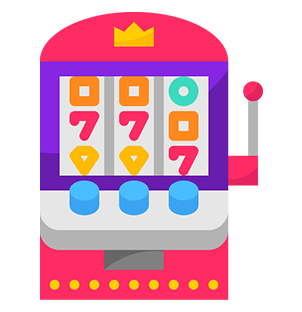Surprising facts about the world of emojis
An emoji is a picture that describes or adds feeling and emotion to a text. It is used in electronic messages and web pages. You get them in various genres, including facial expressions like smiley faces, sad faces, and angry faces.
You also get common objects like a ball and a car, places like a hospital and a house, types of weather like rain and fire and animals like dogs and cats. But where did they come from, and why do they have such an impact on our modern lives? 🧐
The history of emojis
The emoji history is relatively short, although they are always present in modern-day communication. The first emojis were created in Japan in the late 1990s by Shigetaka Kurita, who worked for a mobile company, NTT Docomo.
Kurita was looking for a way to convey information or emotions in a more visually appealing way other than the text-based communication that was then popular. Although there's disagreement about who invented emojis, new evidence shows that Softbank Japan released a mobile phone with 90 emoji characters in 1997, which was 2 years before Kurita.
First set of emojis
The first set of emojis was created in just two weeks, which seems almost unbelievable. 😮 The first batch consisted of 176 simple pixelated images. These included the all-so-popular smiley face and other symbols for weather, food, and transport.
The initial response to emojis back then was both positive and negative. Some people saw them as a fun addition to their messages, while others saw them as childish or unnecessary.
Despite the initial uncertainty amongst mobile users, emojis quickly caught on, particularly in Japan and later worldwide.
During the early months of 2010, the world-famous technology company Apple introduced a set of emojis on its iPhone, and with that, they became a standard feature on smartphones worldwide.
Emojis today
There are over 3000 emojis in use today, with new ones being added regularly. 🤩 The popularity of Emojis shows no signs of slowing down.
Despite their popularity today, there are concerns about the overuse of emojis and symbols and their impact on language and written communication skills, especially among the youth.
Emoji meanings can be confusing and sometimes misunderstood by the reader. Let’s dive in and look at some of the different types of emojis and their meanings.
Types of emojis
Happiness and positivity
This type of Emoji sends a message of joy and positivity. They add a touch of happiness to a message, from tears of joy to a blushing face and let's be honest; you only blush when you are happy. 😊
Confusion
These types of emojis are used to convey feelings of hesitation or curiosity in various situations. This Emoji also helps you express yourself when you’re unsure about a decision, situation, or statement. It can indicate the need for closer inspection and also indicate lying and falsehood. 😕
Sadness and disappointment
Sad emojis can depict a sense of sorrow and dissatisfaction accompanied by a feeling of emptiness. Some can have two meanings: inconsolable grief or over-the-top joy for those who cry when they are super excited. It can also convey a strong desire for something and convey a message of disappointment and unhappiness. 😔
Fear or shock
These emojis portray a feeling of shock or fear for something. They are often used to express an alarming realisation or a scary experience. 😱
Love
We have all been in love at some stage, and love emojis convey the different aspects of love, from affection and attraction to flirtation and admiration. ❤️
Animals
From a man's best friend to whacky wildlife, earth is home to millions of animals and plants. There are tons of animal emoji depictions as well. 😻
Emojis: The world's fastest-growing language
Emoji language has become a global phenomenon and is rapidly gaining popularity amongst people of different ages, from teens to pensioners and employees in the corporate world.
One of the reasons why emoji language is so popular is because it transcends barriers and can be used to communicate with people from different cultures and backgrounds.
The face with tears of joy was named the word of the year in 2015 by the Oxford English Dictionary, acknowledging its widespread use in online communication.
Can emojis be used in schools?
Emojis are colourful and fun and can convey emotions and ideas without using words. But how appropriate are they for use in schools?
The use of emojis in schools today triggers different opinions. Some argue that they are a distraction and should not be allowed in the classroom, while others believe they can be useful for communicating and expressing emotions.
Emojis can distract students as they focus more on finding the perfect Emoji to use for the situation rather than paying attention to the lesson. Emojis can also be misinterpreted and cause confusion, especially when used in an academic context.
On the other hand, emojis can help students convey their emotions and ideas in a more engaging and relatable way, especially among students who struggle to communicate their feelings and thoughts through words. Emojis can also promote diversity by representing different cultures, beliefs and identities.
Using emojis in schools is a complicated issue with valid arguments on both sides. The use of emojis should not be completely banned. It is also important for educators to consider the potential distractions and misunderstandings that may arise from emojis. They must establish clear guidelines for students about using emojis in classrooms.
The use of emojis in the corporate world
It is nearly impossible to overlook the effects of generational gaps in business communications. The fact remains that in certain companies, age plays absolutely no role in using emojis in the workplace.
Most companies employ people who grew up with a smartphone in their hands. They tend to have more relaxed work cultures and beliefs and see no problem with emojis in their company, for example, most tech companies.
Obvious industries like government institutions, law, and healthcare are some of the industries that require a stricter approach to using emojis in communication, which can be seen as wildly inappropriate.
Overall, using emojis in the corporate world is a trend that will likely grow and continue as companies seek to humanise their brands and connect with customers and employees on a more personal level. It is important to keep in mind that you use them in a way that is appropriate for the target audience and the type of digital communication you use.
Did you know these interesting facts about emojis?
- There is an Emojipedia that acts as an emoji reference website where you can find the meaning and common usage of emoji characters.
- The Unicode Consortium adds new emojis every year, and some recent additions include a gender-neutral person, a waffle, a sloth, and a flamingo.
- There is a World Emoji Day, which is celebrated annually on July 17. The reasoning behind the question of why July 17 is because it is famously displayed as a calendar emoji. Although it is the reason for the date, the day is much bigger than just this one Emoji. It is a celebration of all emojis.
- There is a world emoji anthem written and produced by Jonathan Mann.
- Some books only contain emojis. One such book is the book From the Ground by Chinese artist Xu Bing.
- The Museum of Modern Art displays the first popular emojis in New York City. The display sits in the museum lobby and was put on display in December 2016. It consists of the original emoji designs by Shigetaka Kurita.
- About 7% of people using the peach Emoji refer to the fruit. Most users use it for non-fruit meanings, such as buttocks, due to the fruit's resemblance.
- The eggplant was the most notable Emoji in 2015. Emoji users in North America almost exclusively associate this Emoji with sex due to the resemblance to a penis. Due to the Emoji's meaning being of a sexual nature, Instagram banned the use and search of this Emoji back in 2015.
The #1 emoji of the year:
With 254 million mentions worldwide, the face with tears of joy 😂 was the most-used Emoji in 2023. The key to success in life is happiness and joy, so it's no wonder why it was number 1.
The least-used emoji of the year:
We all have our favourite emojis, but when was the last time you actually put some thought into your least-used Emoji? The winner for the least Emoji was the tramway emoji🚊. Can you recall where you have ever seen someone use this Emoji in a conversation?
Conclusion
Overall, while emojis seem like a wonderful addition to digital communication, they can enhance our ability to communicate effectively and empathise with others. They provide a visual shorthand for emotions and actions and can help build a strong connection and foster more meaningful interactions online.
There’s no doubt that these simple images will be around for a long time to come as they help the world connect on a whole new level.

Article by Stelly
CasinoWow Contributor
Hey there! I am Stelly, and happily, I'm part of CasinoWow's content team. It excites me to be able to write and share with all gambling enthusiasts unbiased reviews and news that contribute to the gambling community and industry. Thankfully, I also have the chance to help you make an informed choice for casino brands and games, as well as provide interesting guides and news.
.png)






